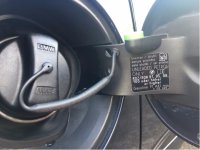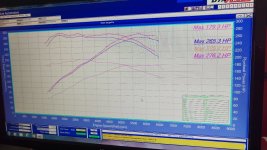OK, so I'm just a little perplexed on the octane ratings on the fuel flap of the 3.0Si. The info seems to state that anything from 91RON to over 100RON is OK but must be a minimum of 91 AKI.
AFAIK, 91 AKI is considered Super Premium in the states and certainly doesn't equate to 91 RON (more like 95 RON).
The (American) manual states:
Required fuel:
Super Premium Gasoline/AKI 91 is highly recommended.
However, you may also use gasoline with less
AKI. The minimum AKI Rating is 87.
If you use gasoline with this minimum AKI Rating,
the engine may produce knocking sounds
when starting at high outside temperatures.
This has no effect on the engine life.
It doesn't state anywhere if there are any gains to be had from switching from 91RON to 100RON. What octane fuel is the specified output of 265bhp done at??
It's a little different to my E46 M3 which specifically states that 97RON fuel is required to meet it's specified output power. Any less than that and the knock sensor will retard the timing slightly so you get a few less ponies to the wheels. No issue in doing this in terms of reliability of course.
Most modern engines automatically retard timing if knock is detected but if the Z4 is saying it makes it's 265bhp on 91RON fuel, you have to wonder how far it advances ignition to take advantage of higher octane. And how often it checks!
This is of course all on the assumption that you simply cannot run the engine at it's most efficient PURELY as a consequence of low octane fuel. That seems a little disingenuous to me.

AFAIK, 91 AKI is considered Super Premium in the states and certainly doesn't equate to 91 RON (more like 95 RON).
The (American) manual states:
Required fuel:
Super Premium Gasoline/AKI 91 is highly recommended.
However, you may also use gasoline with less
AKI. The minimum AKI Rating is 87.
If you use gasoline with this minimum AKI Rating,
the engine may produce knocking sounds
when starting at high outside temperatures.
This has no effect on the engine life.
It doesn't state anywhere if there are any gains to be had from switching from 91RON to 100RON. What octane fuel is the specified output of 265bhp done at??
It's a little different to my E46 M3 which specifically states that 97RON fuel is required to meet it's specified output power. Any less than that and the knock sensor will retard the timing slightly so you get a few less ponies to the wheels. No issue in doing this in terms of reliability of course.
Most modern engines automatically retard timing if knock is detected but if the Z4 is saying it makes it's 265bhp on 91RON fuel, you have to wonder how far it advances ignition to take advantage of higher octane. And how often it checks!
This is of course all on the assumption that you simply cannot run the engine at it's most efficient PURELY as a consequence of low octane fuel. That seems a little disingenuous to me.


